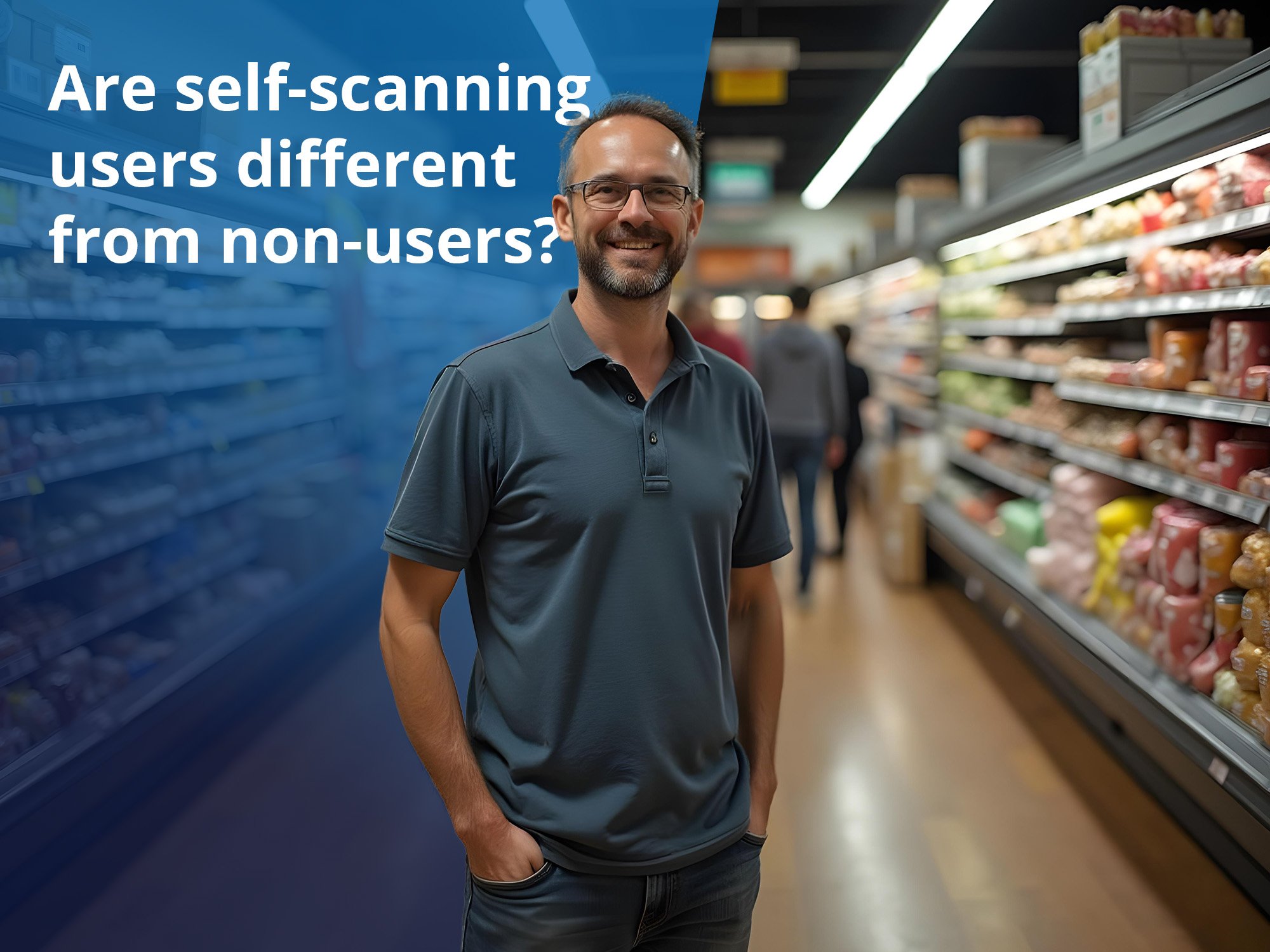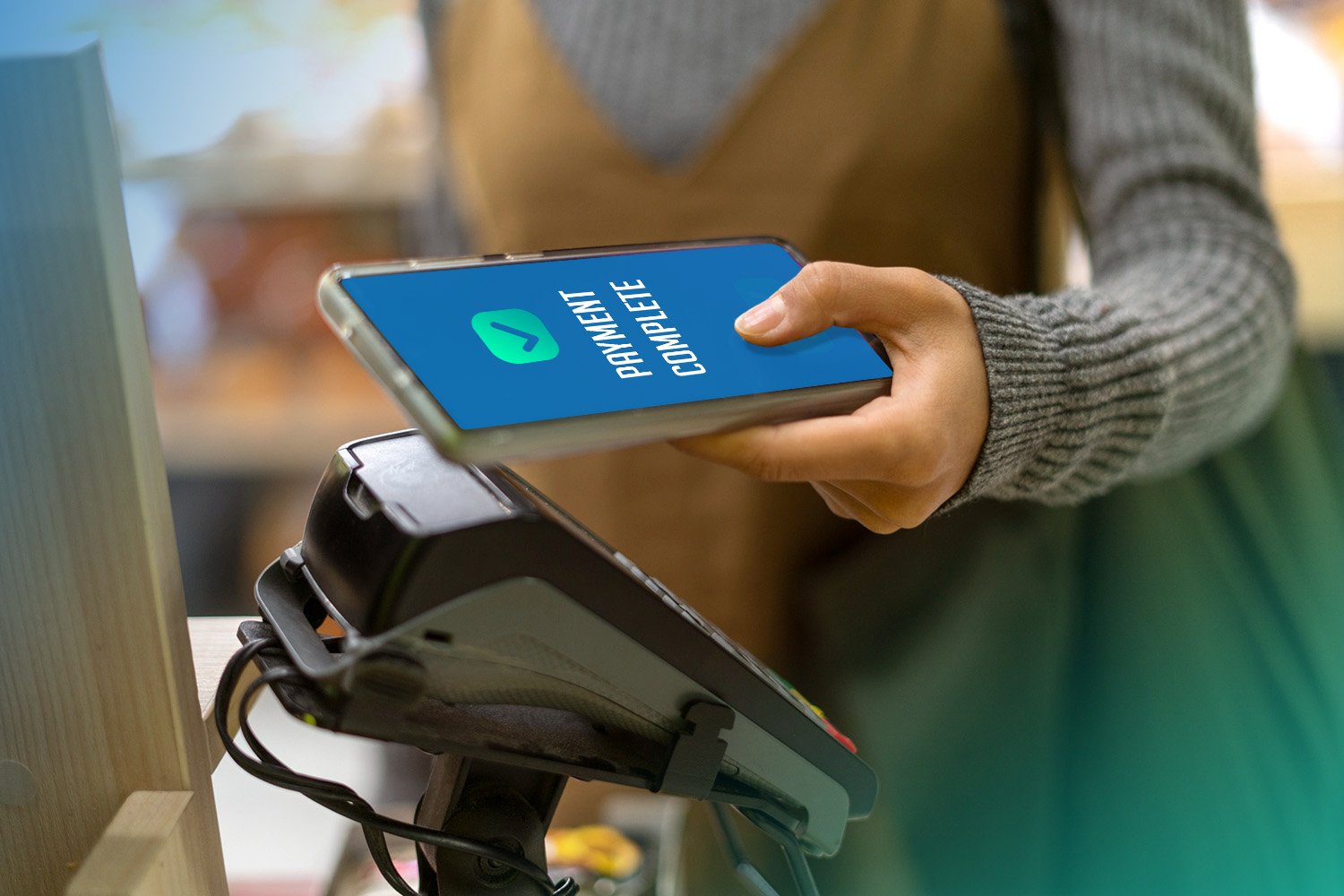Retailer-owned devices for self scanning
Using retailer-owned devices is a popular way to offer self-scanning to the customers. As the popularity and common knowledge about self-scanning has increased, retailers are feeling more confident to invest in this type of technology. But what are the benefits of using retailer-owned devices, and how does it work in reality? Learn more here!
Retailer-owned devices are a good way to encourage customers to try self-scanning.
What is a retailer-owned device (ROD) for self scanning?
A retailer-owned device (ROD) means that the retailer is providing the self-scanning hardware, for the shoppers to use. The shoppers “borrow” these devices in the entrance of the store, and thereafter use them to scan their products during their shopping trip. When the shopping trip is finished, the shoppers pay either directly through the device, or at a designated station before they leave the store. This way, the products are packed already when scanned in the store, and the shoppers do not have to unpack them at the checkout.
The device is charged while being put back into the docking station, and is thereafter ready for the next shopper to use.
In self-scanning terms, the opposite of the retailer-owned device setup is the “Bring your own device” (BYOD), where the self-scanning is done through an app on the shoppers’ own phones. Other alternatives that are sometimes associated with this type of retail technology, is the self-checkout options, where the customers scan all their products by themselves at a designated area before leaving the store.
Who can use the retailer-owned devices for self-scanning?
When the self-scanning technology has been acquired by the retailer, it is the retailer who decides which of the customers that can use this feature.
Sometimes using these devices requires some type of membership card or the participation in a loyalty program, but this requirement varies depending on the self-scanning solution and the preferences of the retailer. Retailers using EasyShop can customize this set-up according to their needs, depending on if they want their shoppers to be anonymous or not. A combination, meaning both members and non-members can use the retailer-owned device, is also possible.
When implementing self-scanning, one does not have to choose between having retailer-owned devices, or that the shoppers do the scanning with their own devices. It is possible to use both ROD and BYOD for the same store – with the same functions.
What are the best self-scanning devices for retailers to use?
There are several manufacturers who provide devices for self-scanning, such as Zebra Technologies and Datalogic. It is encouraged to research which device to use, in order to have a good fit with the functionalities and needed capacities.
It is also important that there is a good fit between the hardware and the software. Even if a device has a high quality, with sufficient battery time and a long product life cycle, the self-scanning software must be compatible in order to maximize the use. This affects the end-user experience and could potentially increase the usage of the devices.
The user interface, and the available functions, are just as important as the hardware devices. Therefore, one must have a clear overview of what functions and capabilities that are needed in order for the shopping experience to be as good as possible.
What are the benefits of using retailer-owned devices?
There are several benefits, both for retailers and the shoppers, to use retailer-owned devices for self-scanning in their stores. We have listed a few of them here:
A good way to start self-scanning
Getting the customers to start self-scanning can be a long and difficult process. One of the major challenges with self-scanning through mobile applications is the uneven customer experiences - sometimes it works and other times it doesn’t. This is something that can be avoided by offering the dedicated self-scanning devices, as these set a certain standard in terms of functionality and user-friendliness.
By providing retailer-owned devices, the retailer displays how easy and convenient the self-scanning experience can be. These devices are thereby a good way to minimize the barrier for customers who are cautious about trying self-scanning for the first time.
“Using retailer-owned devices may seem like a heavy investment at first, especially compared to using a BYOD solution. But using ROD normally directly results in a much higher usage and have a much better and quicker ROI than BYOD and are often "cheaper" in the long run”, says Fredrik Englund, Managing Director of Datema Retail.
Moreover, the station at the entrance of the store, displaying all available self-scanning devices, serves as a reminder for customers who has not yet made self-scanning into a habit. By highlighting the option to self-scan, the customers that may not have considered it, can be encouraged to start.
2. A dedicated device
It is convenient having a dedicated device for self-scanning, if both hardware and software is user-friendly, it will enhance the shopping experience.
When implementing self-scanning with retailer-owned devices to a store, the shopping carts will have a holder where customers can place the devices when not in use. This way, customers don’t have to walk around with the device in their hands or try to find space for it in the trolley.
By using a ROD for self-scanning, the shoppers can use their phones for other activities such as phone calls, checking social media, and such.
3. Gain an advantage with high-quality hardware
While it may seem like a costly investment at first, using high quality hardware can be a great way to minimize other costs in the store, such as the number of staffed checkouts. If the devices have a long life cycle and provides useful features, they will be a good way to encourage shoppers to self-scan their products.
By using devices of high quality, together with a self-scanning software tailored to fit the shoppers needs, the end-user experience will get a higher rating - leading to more of the shoppers choosing to self-scan.
4. Increase customer convenience
Retailer-owned devices can be a great way to increase the convenience connected to self-scanning, by making sure there are devices ready to use. By offering retailer-owned devices for customers to use when self-scanning, there are several annoyances that can be avoided:
Running out of power – The shoppers avoid risking that their phone battery dies, before completing the shopping trip.
Poor scanning ability of the customer’s device – The scanning technology may vary depending on the maturity of the customer’s phone, which can lead to frustrating moments when attempting to scan the products.
Additional app downloads – For various reasons, such as time or limited storage, customers may be unwilling to download another app in order to use the self-scanning feature. A ROD removes this obstacle for the users.
Risk of getting phone stolen – It is common to place the self-scanning device in the cart, for convenience. However, the risk of it getting stolen can be high. A dedicated scanning device can be left in the cart without worries.
How do you implement self-scanning with retailer-owned devices?
Implementing the self-scanning with RODs does not have to be overly complicated or time-consuming. By having a clear image of the budget, scope and expected usage, you can find the suitable solution for your needs. All retailers have different positions and levels of ambition, therefore it can be a good thing to consult with a dedicated partner in order to find the right fit.




